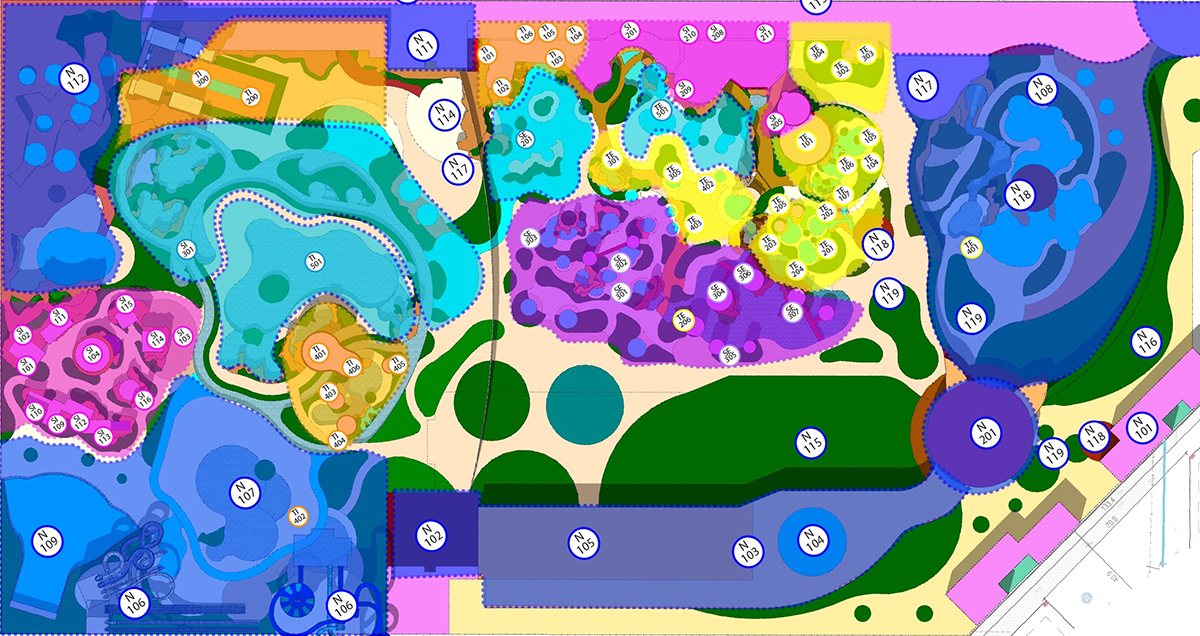Spatial planning is a fundamental part of theme park design. It is a discipline of creative conceptualisation, which shapes the magic of the theme park and therefore the unique and unforgettable visitor experience. But let’s take a look at what this spatial configuration is all about:
Designing the perfect flow of a theme park
Every attraction, every shop, every restaurant, every unit of the different services… In short, every corner of a theme park must form part of the ensemble in order for visitors to travel through it without interruption. As such, spatial planning strategically places each element and each facility to direct visitors in a natural way, without breaking continuity, from the entrance, to the distinctive theme areas, and to the exit.
Strategic placement of attractions in theme parks
The efficient distribution of attractions is not a matter of chance; on the contrary, every decision in this respect is made according to the anticipated interaction of visitors with these attractions and services. Meanwhile, rest areas and restaurants are strategically positioned to favour the breaks that users desire. An example of this can be found at the Disneyland theme park, where the Pirates of the Caribbean attraction welcomes visitors near the entrance and therefore immediately engages them in an immersive experience.

Optimising theme park space
From the imposing grandeur of a castle to the cosy lightness of a village, each space evokes specific emotions. We consider not only aesthetics in the design, but also scale, location in relation to other elements, etc. All to enhance the overall narrative of the theme park. In this case, Universal’s Islands of Adventure provides an example: every corner of The Wizarding World of Harry Potter area transports visitors into the magical world of Harry Potter and contributes to their total immersion in it.
Spatial technology in theme parks
In the digital age, navigation apps for smartphones help visitors to optimise their time and easily find the itinerary that best suits their wishes. At the same time, the collection of visitor flow data is useful for the theme park operation, which will be able to make adjustments on an ongoing basis and therefore improve efficiency and the visitor experience. One example is Disneyland’s mobile app, which provides visitors with real-time information about waiting times at attractions, the location of restaurants or scheduled activities with their characters.
Spatial planning strategies in a theme park
Thematic zoning, the first of these strategies, divides the park into zones with their own unique atmosphere. For example, in Epcot at Walt Disney World, the themed areas represent different countries. A circular spatial design organises the park to facilitate transit and reduce dead spots. The planning of interconnection points also links different themed areas and facilitates the transition from one to another. For example, at Universal Studios Hollywood, a tram connects distant areas of the park. The flexibility of the spaces, so that the theme park adapts to the seasons, the introduction of new attractions, etc., results in efficiency over time. We see this at Disneyland Tokyo, where a series of modular spaces are transformed to accommodate events and/or changes in the attractions on offer.
By Manuel Ginés, Senior Architect in the Architecture Department at Amusement Logic






